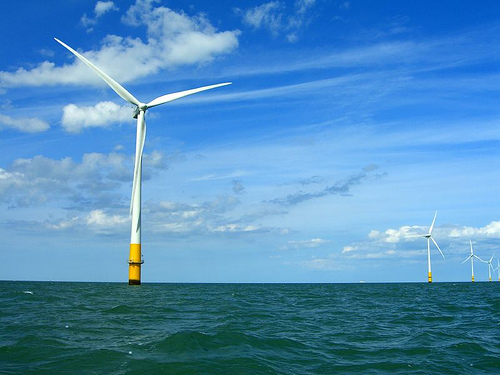The CEFC has received an updated Investment Mandate that will come into effect 24 December 2015. A copy of the new Investment Mandate – entitled Clean Energy Finance Corporation (Investment Mandate) Directions 2015 (No.2) – can be found on Comlaw here: https://www.comlaw.gov.au/Details/F2015L02114
The Investment Mandate was signed by the Ministers on 3 December 2015, was registered on the Federal Register of Legislative Instruments on 23 December 2015 and will take legal effect on and from 24 December 2015.
This new Investment Mandate replaces the previous Investment Mandate, which has been in effect since 5 March 2015. It is issued by the CEFC’s responsible Ministers the Hon Greg Hunt MP (Minister for the Environment) and Senator the Hon Mathias Cormann (Minister for Finance).
The CEFC welcomes the new Investment Mandate and looks forward to addressing the new investment focus as part of its investment activities.
Consultation with the CEFC
The CEFC Board was consulted on a draft of the new Investment Mandate in accordance with the procedure set out in the Clean Energy Finance Corporation Act 2012 (the CEFC Act). For further information visit, http://www.cleanenergyfinancecorp.com.au/
Mandated Changes for CEFC: Areas of focus
The revised Investment Mandate introduces a new clause 13: “Corporation’s activities to focus on emerging and innovative clean energy technologies, energy efficiency and the built environment”.
Clause 13 specifies that the CEFC must include a focus on supporting emerging and innovative renewable technologies and energy efficiency, such as large-scale solar, storage associated with large and small-scale solar, offshore wind technologies, and energy efficiency technologies for cities and the built environment.
 It is important to understand this new focus is not exclusive. Clause 13 provides for these new areas of focus for the CEFC “as part of its investment activities”.
It is important to understand this new focus is not exclusive. Clause 13 provides for these new areas of focus for the CEFC “as part of its investment activities”.
The CEFC will therefore continue to pursue a diverse range of investment activities that are within the scope of the CEFC Act and this new Investment Mandate.
Together, the new Investment Mandate and the accompanying Explanatory Statement provide guidance on how the CEFC should approach investment in mature and established technologies, such as conventional onshore wind and conventional hydro. It is the Government’s expectation that, in many circumstances, projects involving mature technologies should be able to secure finance from commercial financing sources.
Consequential changes
The insertion of the new clause 13 has an accompanying consequential amendment to clause 8 on Portfolio Risk. The effect of this amendment is to allow the CEFC’s level of portfolio risk to be set at “reasonable terms having regards to the terms of the Act and the focus on emerging and innovative technologies”.
In practice, the CEFC does not expect this will have a large impact on the way the CEFC manages risk through its Risk Management Framework. The CEFC will continue to adopt a portfolio-based approach to building out its investment activities, so that investments with higher inherent risk (such as new and emerging technologies) are appropriately balanced alongside those with lower inherent risk (such as investments relating to more mature technologies). However, it does signal that the Government recognises and accepts that an increased focus on supporting emerging and innovative technologies and businesses carries with it a higher level of investment risk.
Impact on existing CEFC investments
The new Investment Mandate is not retrospective and therefore will have no impact on existing investments.
The CEFC has a well-developed pipeline of projects that it is reviewing. Since beginning operations in 2013, the CEFC has received proposals from more than 300 project proponents seeking CEFC finance of almost $8 billion, for total project costs of more than $25 billion (at 30 June 2015). Our investment portfolio is diversified across technologies, industries and state geographies. It includes mature and established technologies, as well as emerging and innovative technologies and a range of financing products.
CEFC new investment focus
With the new investment focus outlined in our Investment Mandate, the CEFC will direct an increased level of attention towards businesses and projects that involve emerging and innovative renewable technologies, energy efficiency and clean energy technologies including those that support the Australian Government’s agenda around cities and the built environment.
The CEFC will also continue to meet its objectives under the CEFC Act, including through making investments in mature and established technologies using financial products and structures to address market barriers to securing private sector finance.
Those seeking CEFC finance are encouraged to contact the CEFC or complete an application form outlining their project proposal. This is available on the CEFC website: cleanenergyfinancecorporation.com.au.
About the CEFC Investment Mandate
Under the CEFC Act, the Government can provide directions to the CEFC as to how it may make investments by issuing to it an investment mandate. An investment mandate may not:
require the CEFC to make or not make a particular investment; or
be inconsistent with the CEFC Act (including the object of the CEFC Act).
Under the CEFC Act, the CEFC Board must be consulted on the draft of a proposed new investment mandate, and any submission made by the Board must be tabled in Parliament.
